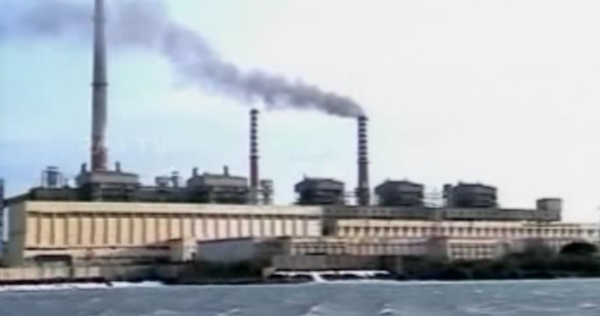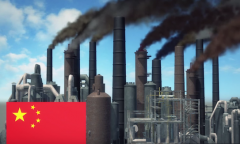By Vishal Goel, | January 03, 2017

The Tuticorin thermal power station is said to be the first industrial-scale example of carbon capture and utilization (CCU). (YouTube)
An Indian company named Carbon Clean Solutions has developed a technology to capture carbon dioxide emissions from industries and use it to make baking powder. The firm claims that it would capture around 60,000 tons of carbon dioxide per year using its carbon capture and utilization technology.
Like Us on Facebook
The technology is currently being used by a plant at the industrial port of Tuticorin to convert CO2 from its coal-powered boiler to make soda ash (also known as baking powder). The technology, which is running without subsidy, is a major advancement in the field of carbon capture technology.
Until now, carbon emissions have been forced into underground rocks at great cost and no economic benefit, a method called carbon capture and storage (CCS). The Tuticorin plant is said to be the first industrial scale example of carbon capture and utilization (CCU).
The Indian plant solved the problem of stripping out CO2 from the relatively low concentrations in which it appears in flue gas by using a new CO2-stripping chemical. Although it is only slightly more efficient than the current CCS chemical method, it needs less energy, is less corrosive, and requires much smaller equipment meaning the building cost is much lower than for conventional carbon capture. The new kit has been installed at Tuticorin Alkali Chemicals.
CO2 as a chemical raw material already has a global market. It comes mainly from industries such as brewing where it is cheap and easy to capture. Soda ash has a wide range of uses including detergents, glass manufacture, sweeteners, and paper products.
Ramachandran Gopalan, the firm's managing director, said that the plant has virtually zero emissions to air or water. According to Carbon Clean, capturing usable CO2 can deal with perhaps 5-10 percent of the world's emissions from coal.
-
Use of Coronavirus Pandemic Drones Raises Privacy Concerns: Drones Spread Fear, Local Officials Say

-
Coronavirus Hampers The Delivery Of Lockheed Martin F-35 Stealth Fighters For 2020

-
Instagram Speeds Up Plans to Add Account Memorialization Feature Due to COVID-19 Deaths

-
NASA: Perseverance Plans to Bring 'Mars Rock' to Earth in 2031

-
600 Dead And 3,000 In The Hospital as Iranians Believed Drinking High-Concentrations of Alcohol Can Cure The Coronavirus

-
600 Dead And 3,000 In The Hospital as Iranians Believed Drinking High-Concentrations of Alcohol Can Cure The Coronavirus

-
COVID-19: Doctors, Nurses Use Virtual Reality to Learn New Skills in Treating Coronavirus Patients











